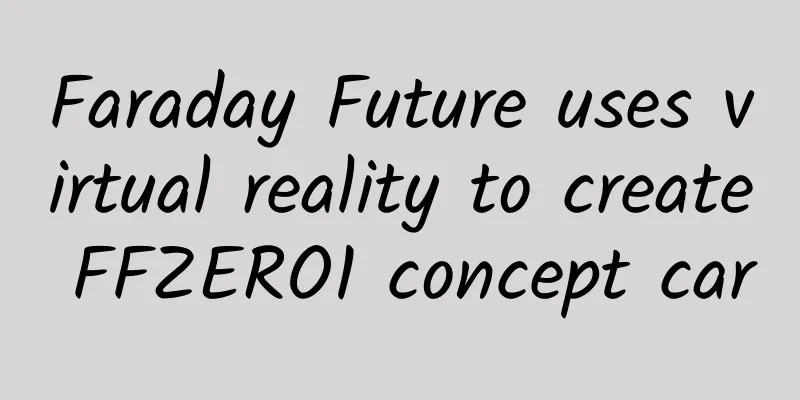BYD Tang DM-i: What is the black technology of super hybrid? The fuel consumption is only 5 liters per 100 kilometers when the battery is depleted

|
The automotive industry is in the midst of a dramatic transformation from engines to electric motors. People love the performance and driving quality of electric vehicles, but are also nostalgic for the convenience of fuel vehicles, which has led to the current dilemma in car purchasing. The electrification of automobiles has become a consensus in the industry, but before the battery bottleneck is resolved and charging stations reach the density of gas stations, many car owners still hold a wait-and-see attitude towards pure electric vehicles. Nowadays, there are four technical routes for automobiles: pure electric, extended range, hybrid, and fuel. Each of the four routes has its own advantages and disadvantages. How to choose really needs to take into account each consumer's own car environment and charging conditions. Faced with so many choices, BYD said, "Only children make choices. I want them all." BYD's DM-i super hybrid technology is launched. With the support of the plug-in hybrid generator Xiaoyun, BYD's DM-i car combines the power response of a pure electric vehicle, the low fuel consumption of a hybrid vehicle, and the high-speed economy of a fuel vehicle. So how did BYD do it? Has the DM-i model gotten rid of the past reality of "a dragon when there is electricity, a worm when there is no electricity"? Today, let’s take a look at the BYD Tang DM-i. Details are visible in the grand opening and closing, and the imposing appearance is combined with luxury beyond the level In terms of appearance, the BYD Tang DM-i model is almost identical to the DM top-end model. The only difference is that the DM-i wheel size is two inches smaller, the brake caliper is changed from Brembo six-piston to double-piston, and the door handles no longer have electroplated decoration. There is basically no difference in other aspects. From the front, Tang DM-i still uses the Dynasty family's Dragon Face design style. The bold design is highly recognizable, and the front face with basically no white space looks very imposing. The wide air intake grille adopts a silver-gray contrasting design, but all horizontal lines, including the air intake grille and brake cooling channels, are highlighted with a silver tone, showing that Tang DM-i has sufficient visual width. Overall, the front appearance of Tang DM-i basically follows the family elements. It is not as aggressive as its brothers from the Han, Song and other dynasties, but it has a more homely and harmonious feeling. With the same standard body of a mid-size SUV, the 7-seater Tang DM-i is positioned for both business and home use, which means its exterior design is destined to be conservative. Even its dimensions are perfectly inherited from the Tang series, measuring 4870mmx1950mmx1725mm and with a wheelbase of 2820mm, which is also the standard body of a mid-size SUV. The side and back are consistent with the Tang DM version. The widely acclaimed designs such as the floating roof and through-type headlights are retained. The difference is that on the back, there is an additional letter i after DM, indicating its super hybrid identity. In addition, the Tang DM-i, which emphasizes economy rather than performance, does not have the 100 km/h acceleration time indicator at the back. Space is naturally one of the advantages of Tang DM-i. After leaving a moderate space in the front row, when sitting in the second row, there is still more than three fists of space from the knees to the front seats. After I, who am 1.8 meters tall, sit up straight, there is still more than three fingers of space from the top of the head to the roof. Sitting in the car feels very spacious. The top-of-the-line Tang DM-i model uses leather seats with a dragon-scale pattern. The slightly tilted angle of the second-row seats provides excellent support. The seat back angle is moderate, and the relatively soft material does not cause fatigue even when sitting for a long time. Another good point is that the platform protrusion in the middle of the second row is not obvious, and the riding experience of the middle seat is also good. However, only two USB ports are provided below the air-conditioning outlet at the rear of the armrest box, and the highly acclaimed 220V socket has been cancelled across the board. This has been criticized by many car owners who want to drive the "Tang" on long trips, and they believe that the cancellation is of little significance. Of course, if a large family goes out to play, they can still use the power strip connected to the vehicle's charging port for cooking and boiling water. However, if they want to use electrical appliances such as laptops in the car, they will need to purchase an inverter separately. As a seven-seater SUV, the right-hand seat in the second row of Tang DM-i can be folded down to create a passage leading to the third row. The overall floor of the third row is relatively high, and the front and rear space is relatively limited. There is no problem for children under 14 years old to ride in it, but if it is an adult, I am afraid they will not be able to endure it for a long time. We do not recommend that seven adults ride for a long distance. After all, mid-sized 7-seater SUVs are more for the daily travel needs of families with two or even three children. A five-seater car is already overloaded with a couple, parents, and two children. Even if you carry a child, you will face the risk of being fined by the police, and it is also very unsafe. A 7-seater car can perfectly solve this problem and is enough for families with three children to travel together. Many car reviewers think that 7-seater cars are useless because most of the time they are not fully occupied, and they have to endure higher purchase costs and the trunk space is occupied. However, SUV models are designed to meet the needs of family travel. When facing the need to travel with more than 5 people, whether there are 7 seats actually constitutes the premise of whether the family can travel together. There is no doubt that 7 seats means that more of our travel scenarios can be met. For many families and car owners, although they are not used every day, 7 seats are indeed a necessity. As for the interior, sitting in its wraparound cockpit, you can feel that BYD has given it a full sense of luxury. Most of the places that can be touched are wrapped in fabric, which still has the flavor of the Tang series's cross-level configuration. The dashboard is made of leather, piano paint, frosted metal, and suede with yellow stitching from top to bottom. The well-arranged combination provides an excellent visual effect and a very high-quality feel. The four doors also use the same material configuration, providing a strong sense of unity. Tang DM-i also uses a standard 12.3-inch LCD instrument panel and a 15.6-inch rotatable central control screen, which can be regarded as a time-tested old partner, taking into account both practicality and entertainment. Whether it is the visual experience of narrow bezels, excellent display effects, smooth operation, voice assistant that can control almost all mechanical structures in the car, or the expandability that can install third-party software, Tang DM-i can be said to have excellent performance. In addition, the BYD DiLink intelligent networking system is easy to use, can be remotely controlled, and supports OTA upgrades. Previously, we have given it many comments in BYD car reviews, so we will not repeat them here. In short, the interactive experience can be regarded as excellent. High performance hidden under low fuel consumption, exquisite coordination between engine and motor Before talking about the dynamics, let’s briefly summarize the working logic of Tang DM-i Super Hybrid. Tang DM-i adopts BYD's plug-in hybrid Xiaoyun 1.5Ti engine with a maximum power of 102kW and a maximum torque of 231Nm; the total power of the motor is 160kW and the total torque is 325Nm. Its power design concept is mainly guided by energy saving and high efficiency. With the support of high-power motors, large-capacity high-performance power batteries, and high thermal efficiency engines, it achieves ultra-low fuel consumption, quiet and smooth operation, and excellent power. The Tang DM-i is equipped with a 1.5Ti engine dedicated to the Xiaoyun plug-in hybrid, which has a compression ratio of 12.5:1 and a thermal efficiency of 40%. It uses the Miller cycle, which also expands the stroke greater than the compression stroke, to increase the compression ratio. If a general engine simply uses the Miller cycle, although the fuel efficiency will be greatly improved, it will inevitably lead to a decline in performance. Because the Tang DM-i uses an engine specifically for plug-in hybrid vehicles, BYD boldly canceled the front-end gear train and handed over the work of the generator, compressor, vacuum pump, water pump, etc. to the electrical system, so that the fuel economy can be improved while ensuring the engine performance. In addition, we know that electric motors are very suitable for operating in medium and low speed scenarios. The power response of electric motors is fast, smooth and quiet, and can provide an excellent driving experience. However, for electric motors, high-speed operation is the engine's advantageous operating range. In other words, the electric motor and the engine form a state of complementary advantages between the operating conditions. For Tang DM-i, under low-speed conditions, the vehicle will be driven by an electric motor, which has the advantages of sufficient power, quick response and low noise. When running at low speed in a low-battery state, an electric motor will also be used, and the engine will act as a range extender to drive the generator to generate electricity. However, because the engine does not need to be started and stopped frequently, it can also maintain efficient operation in the economic range, which is more energy-efficient and fuel-efficient than using the engine directly to drive. Moreover, as long as the fuel is not used at full capacity for a long time, the generator can fully meet the power supply needs of medium and low-speed motors in a low-power state without intervening in power output. When the speed reaches above 100 kilometers per hour, which is the engine's home field, Tang DM-i will naturally switch to the engine direct drive mode. Once we understand the logic of this power coordination, it is not difficult for us to understand why the Tang DM-i can achieve an actual fuel consumption of only 5 liters per 100 kilometers when the battery is low. The Tang DM-i supports plug-in charging, and the high-end version supports 25kW fast charging. If there is a charging station at home, the high-end version's 112km range is enough for you to use it as a pure electric car for daily commuting, and you won't have the range anxiety of a pure electric car at all. Even if there is no electricity, you can refuel to achieve extended range or high-speed direct drive. Even when the battery is low, the fuel consumption is only 5L per 100km, which is equivalent to a cost of more than 0.3 yuan per kilometer, which is about the same as the cost of using a pure electric car. Moreover, considering that this is a 7-seater medium-sized SUV with a weight of more than two tons, this result can be said to be very good. Okay, now that we have explained the principle, it will be easy to understand the driving experience. At low speeds, it goes without saying that the Tang DM-i feels like a perfect electric car. BYD has extensive experience in tuning this aspect. Tang DM-i has plenty of power, responds crisply and efficiently, and accelerates smoothly. Even when the battery is low, the engine rarely intervenes in the drive at low speeds, and does not affect the acceleration performance, unless it is driven violently for a long period of time. However, even so, or when switching to direct drive mode at high speed, BYD can adjust the motor to make the engine's intervention process completely imperceptible, and the connection is very smooth without any jerks. In terms of NVH, Tang DM-i also performs outstandingly, the engine sound is also well suppressed, and the anti-vibration and noise insulation performance far exceeds the average level of cars at this price. The chassis tuning of Tang DM-i has also been upgraded, and it has excellent filtering performance for road bumps and noise. This is due to the 245/45 R20 Giti tires it uses, which are a tire that tends to be comfortable and energy-saving. In terms of suspension, Tang DM-i adopts the front McPherson and rear multi-link configuration, which is lower than the top configuration of Tang DM, and the material has changed from aluminum alloy to steel. Of course, it is nonsense to talk about configuration without considering the price, and the chassis depends on hardware for 30% and tuning for 70%. The suspension tuning of Tang DM-i is heavier than that of Tang. It handles road bumps more gently and suppresses large drop bounces more effectively. However, when taking corners at high speed, the unilateral rebound of Tang DM-i's suspension is not crisp enough. It can only be said that when emphasizing comfort, you can't have your cake and eat it too. Summarize To sum up, Tang DM-i is a model that is the result of BYD's many years of technological accumulation. It fully utilizes the advantages of electric vehicles and fuel vehicles. Its power response is smooth, and its quiet driving experience far exceeds that of fuel vehicles of the same price. The extreme situation of the Tang DM model's electric and gasoline experience has finally been resolved. At the same time, in terms of fuel consumption, it has a crushing performance. As for car purchase suggestions, we recommend buying the high-end version. On the one hand, it has a pure electric range of 112 kilometers. On the other hand, it can also use fast charging stations throughout the city, making this car a pure electric commuting tool in the city. Tang DM-i undoubtedly provides a new idea for the current wave of electric vehicles: instead of arguing about which route is the ultimate route, it is better to learn from the strengths of all parties. Of course, this is also due to BYD's years of technological accumulation and comprehensive industrial chain layout. Flat wire motors, lithium iron phosphate batteries, engines, electric motors and other technologies can all find similar suppliers in the international market, but BYD's advantage lies in the comprehensive integration of superior technologies, a capability that few in the industry can match. Moreover, the addition and adjustment of product functions can be done through an internal WeChat voice message. This super-efficient product iteration method has in fact constituted BYD's highest technical barrier - excellent organizational structure and response speed are the most basic barriers of a company. Of course, the shortcoming of Tang DM-i is that it is not possible to pick up the car. In the Tang DM-i car owner group, the most common thing everyone does every day is to "persuade each other to quit", hoping that there will be fewer people in the queue in front of them. But what is hilarious is that no one has withdrawn their orders. Everyone is patiently waiting for BYD to increase the delivery speed, which shows the product appeal of Tang DM-i. I hope BYD can solve this problem as soon as possible and find a balance between the contradiction between "owners' eagerness to pick up their cars" and "Tang DM-i's insufficient production capacity" so that this good car can be delivered to thousands of households faster. As a winner of Toutiao's Qingyun Plan and Baijiahao's Bai+ Plan, the 2019 Baidu Digital Author of the Year, the Baijiahao's Most Popular Author in the Technology Field, the 2019 Sogou Technology and Culture Author, and the 2021 Baijiahao Quarterly Influential Creator, he has won many awards, including the 2013 Sohu Best Industry Media Person, the 2015 China New Media Entrepreneurship Competition Beijing Third Place, the 2015 Guangmang Experience Award, the 2015 China New Media Entrepreneurship Competition Finals Third Place, and the 2018 Baidu Dynamic Annual Powerful Celebrity. |
Recommend
Standardized use, no mistakes! 2022 version of standard map released
August 29th is the 19th National Surveying and Ma...
Carbon neutrality is cute, everyone should know it sooner
Hello everyone, I am the cute little carbon dioxi...
Baidu SEM Bidder Practical Super God Guide Course
Learn to master: platform operation, account buil...
Well-known APP marketing director teaches you: How to plan an efficient marketing operation plan?
What? Reading and understanding this article can ...
About the "little incident" of bringing a herd of rabbits to Australia in 1859
Produced by: Science Popularization China Author:...
Build a user growth system from scratch?
The user growth system is an operational means fo...
How have humans communicated from ancient times to the present? Experience the development of communication networks
"Guess how long it takes for a pair of custo...
Will housing prices in Guangzhou fall in 2020? Guangzhou housing price forecast analysis
Will housing prices in Guangzhou fall in 2020? An...
Sales in April fell below 10,000 units again. Why did BYD Dolphin follow the same path as Wuling Hongguang?
Shocking! BYD Seagull's monthly sales exceede...
Daokun Taobao store group profit 50,000+ project full process, teach you how to make tens of thousands of yuan a month without Taobao source
Daokun Taobao store group profit 50,000+ project ...
Some organisms have not changed in hundreds of millions of years. Has evolution really stagnated?
Some organisms seem to have remained unchanged in...
Brand marketing trends in 2020!
2019 has passed by quickly, but it has left many ...
When an asteroid strikes, what else can we do except let the Earth wander?
When an asteroid strikes, what else can we do exc...
How can e-commerce companies operate Douyin private domain well?
With the rise of live streaming platforms and sho...
What has our ancestors had for their New Year’s Eve dinner for more than two thousand years?
It’s New Year’s Eve again, we stay up all night, ...









